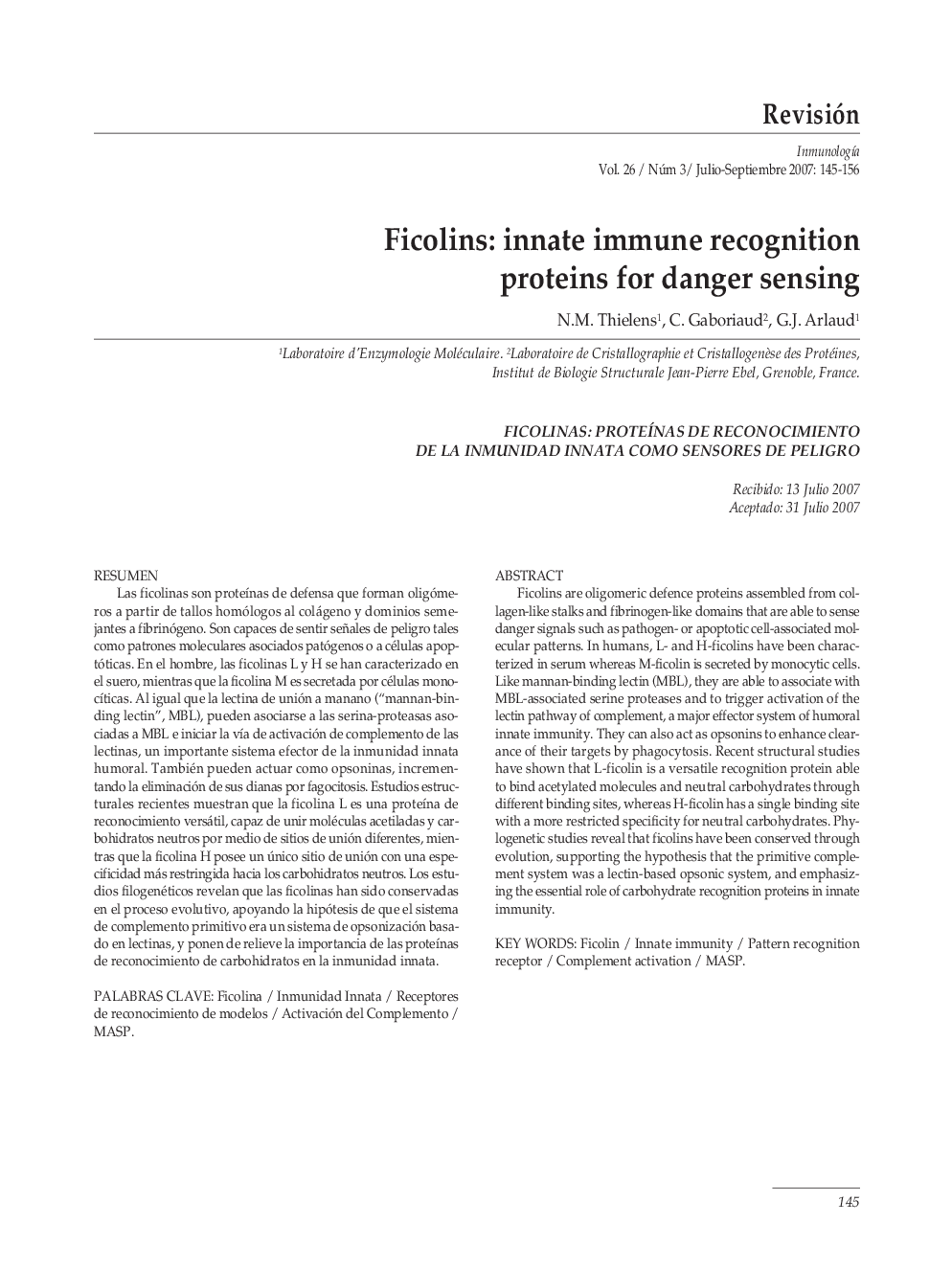| Article ID | Journal | Published Year | Pages | File Type |
|---|---|---|---|---|
| 3358361 | Inmunología | 2007 | 12 Pages |
Abstract
Ficolins are oligomeric defence proteins assembled from collagen-like stalks and fibrinogen-like domains that are able to sense danger signals such as pathogen- or apoptotic cell-associated molecular patterns. In humans, L- and H-ficolins have been characterized in serum whereas M-ficolin is secreted by monocytic cells. Like mannan-binding lectin (MBL), they are able to associate with MBL-associated serine proteases and to trigger activation of the lectin pathway of complement, a major effector system of humoral innate immunity. They can also act as opsonins to enhance clearance of their targets by phagocytosis. Recent structural studies have shown that L-ficolin is a versatile recognition protein able to bind acetylated molecules and neutral carbohydrates through different binding sites, whereas H-ficolin has a single binding site with a more restricted specificity for neutral carbohydrates. Phylogenetic studies reveal that ficolins have been conserved through evolution, supporting the hypothesis that the primitive complement system was a lectin-based opsonic system, and emphasizing the essential role of carbohydrate recognition proteins in innate immunity.
Keywords
Related Topics
Life Sciences
Immunology and Microbiology
Immunology
Authors
N.M. Thielens, C. Gaboriaud, G.J. Arlaud,
